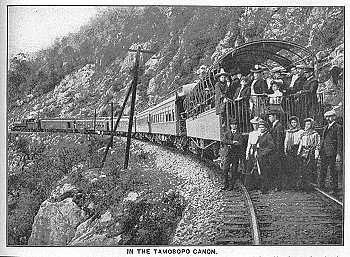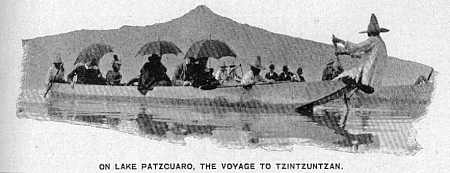Did You Know…?
Comprehensive guide books to Mexico have existed for more than 120 years.
Modern travelers to Mexico are often hard-pressed to choose their favorite guide. Fodor’s, Frommer’s, Real Guide, Insight Guide, Moon Guides, Lonely Planet and Rough Guide all have their fans. All have their own strengths, though all are competing for the same market.
But the situation was very different in the nineteenth century. Travelers prior to the 1880s could not rely on a single volume for details of history, sights and hotels, because no such book yet existed!
Perhaps the first truly national guide was Appletons’ Guide to Mexico, including a chapter on Guatemala and an English-Mexican vocabulary, first published in 1883. Though it lacks an index, this is a general travel guide, with particular reference to railways. Tourists are advised to “carry soap and matches”, and encouraged to visit in the rainy season: “if the tourist wishes to avoid the clouds of dust that rise on the great plateau of Mexico, he should travel in the rainy season. i.e. June to September.”
The first edition was published shortly before the completion of the Mexican Central Railway. Not all the comments in the book would be considered politically correct today. For instance, the author is dismissive of Zintzuntzan [sic], on Lake Patzcuaro, “once a town of 40,000”, because “today its edifices are destroyed, its streets deserted and its few inhabitants are extremely ignorant.”

Appletons’ Guide was greatly praised in contemporary reviews as meeting a “long-felt want”, with one reviewer congratulating Conkling for being so “heroically self-sacrificing… in finding out the truth about the discomforts of the poor hotels and poorer fare”. Among the “minor errors” noted by the reviewer is Conkling’s statement that, “There is not a single fireplace in any building in Mexico.”
The author of Appletons’ Guide was Alfred Ronald Conkling, a grandson of Alfred Conkling (1789-1874), a lawyer, writer, U.S. Congressman, and Minister to Mexico (1852-1853). The grandson, born in New York City, graduated from Yale in 1870 and studied briefly at Harvard, before moving to Europe to study in Germany. Fluent in French and German, he traveled widely in Europe and climbed several Alpine peaks, including Mt. Blanc. On his return to U.S., he was employed by the United States geological survey (1875-1877). He then studied law, was admitted to the bar in 1879, and became assistant United States attorney in 1881-82. He also wrote numerous articles for the New York Tribune and the Evening Post and Herald.
Curiously, another grandson of Alfred Conkling, Howard Conkling, a wealthy New York lumber man, also wrote about Mexico, though his book, Mexico and the Mexicans or Notes of Travel in the Winter and Spring of 1883 was dismissed in a contemporary review as “an arid and toilsome tract.”
Appletons’ Guide was a great success and went to several editions. It also prompted other writers to try their luck at producing a comprehensive guide to Mexico.
Perhaps the best of the nineteenth century guides was that writen by Reau Campbell. Campbell’s first two books, both relatively short, were published in 1889. They were Around the corner to Cuba and Rides and rambles on Staten island. They were quickly followed by a short work on Mexico: Mexico: Tours through the Egypt of the New World (1890). All three books were produced by C.G. Crawford, a New York publisher.

Campbell had begun traveling in Mexico around 1885, and his interest in the country continued to grow. In 1892 he wrote Mexico and the Mexicans, the material matters and mysterious myths of that country and its people, published by the Sonora news company.
After a decade of visits to Mexico, Campbell appears to have come to the realization that a guide might be a good idea, and that it might be a lasting legacy. “I have known these difficulties as an early traveler in Mexico, and, while I rejoiced in seeing what others had not seen, I have wished for the book that might guide me over untraveled roads, till I have come to believe that he who writes the book leaves a legacy to him who comes after.”
In 1894, he undertook an “exploring expedition” to check facts and personally visit uncharted corners. Of the places “not found in other books”, “none are more important or more interesting than the pre-historic Ruins of Mitla, visited first by my exploring expedition of 1894, and which are here written of for the first time since the earlier chronicles of the country.”
The results of his dogged research resulted (1895) in a more definitive guide to the country than any previous effort: Campbell’s complete guide and descriptive book of Mexico. With a special focus on railroad travel, this found a willing publisher in Chicago.
By 1899, this work had been enlarged and transformed into Campbell’s new revised complete guide and descriptive book of Mexico, which was to go through numerous editions and printings. The book is almost as comprehensive as its title suggests, written very much in the style of a modern guide. Profusely illustrated by more than 200 phototypes, it provides sketches of Mexico’s geography and history, discusses practical matters (such as horse cars, hotels, and shopping for cigars), and offers details about amusements, railway rides, towns, cities, and natural and cultural attractions.
Campbell’s only other recorded work is Campbell’s new revised complete guide and descriptive book of the Yellowstone Park (1909), which also went into numerous editions.
So, next time you reach for your favorite guide book to check what to see on your next trip, or where to stay, just spare a thought for those early pioneers of travel writing back in the nineteenth century. Their books may not be exactly up-to-date, but they are still great fun to read even today.
Text and all photos © Copyright 2005 by Tony Burton. All rights reserved.


